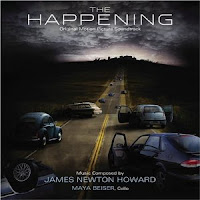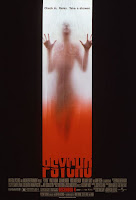Our primary goal was to create the opening to a new thriller movie. To create our final product, we had to go through several stages – planning (which consisted of seeking consumer feedback and coming up with an original film idea), filming and editing on iMovie.
The BBFC categorise their films into six main categories – U, PG, 12, 12A, 15 and 18. A traditional thriller tends to consist of a victim and the main perpetrator or ‘villain’ (sometimes - and going against convention - the main character in a thriller). The setting is usually dark and suspicious, but realistic, so that the audience can relate to what is happening and there is usually one object of particular focus in the shot, such as a weapon. Reaction shots of characters are also often used to add more depth to the scene.
A traditional thriller tends to consist of a victim and the main perpetrator or ‘villain’ (sometimes - and going against convention - the main character in a thriller). The setting is usually dark and suspicious, but realistic, so that the audience can relate to what is happening and there is usually one object of particular focus in the shot, such as a weapon. Reaction shots of characters are also often used to add more depth to the scene.
 A traditional thriller tends to consist of a victim and the main perpetrator or ‘villain’ (sometimes - and going against convention - the main character in a thriller). The setting is usually dark and suspicious, but realistic, so that the audience can relate to what is happening and there is usually one object of particular focus in the shot, such as a weapon. Reaction shots of characters are also often used to add more depth to the scene.
A traditional thriller tends to consist of a victim and the main perpetrator or ‘villain’ (sometimes - and going against convention - the main character in a thriller). The setting is usually dark and suspicious, but realistic, so that the audience can relate to what is happening and there is usually one object of particular focus in the shot, such as a weapon. Reaction shots of characters are also often used to add more depth to the scene. One opening we studied was the unconventional ‘The Happening’. In this, there is no known villain. Instead, the killer is unseen, and acts in waves of mass murder, making it appear yet more random. Also, due to the demeaning way that the victims die, the viewer feels more empathy for the main characters in the story, causing you to feel more of a dislike towards the menacing, invisible killer. The scene makes heavy use of reaction shots, especially with two friends on a bench, who are the last people to be affected in this scene. The thriller theme is re-enforced by the viewer having no clear understanding of why any of this is happening, creating an heir of mystery, which is also linked into the ‘unseen killer’ theme. We tried to adapt the use of reaction shots (close-ups of the face showing emotion) and regular close-ups on important objects (i.e. the knife), especially with the bride character.
One opening we studied was the unconventional ‘The Happening’. In this, there is no known villain. Instead, the killer is unseen, and acts in waves of mass murder, making it appear yet more random. Also, due to the demeaning way that the victims die, the viewer feels more empathy for the main characters in the story, causing you to feel more of a dislike towards the menacing, invisible killer. The scene makes heavy use of reaction shots, especially with two friends on a bench, who are the last people to be affected in this scene. The thriller theme is re-enforced by the viewer having no clear understanding of why any of this is happening, creating an heir of mystery, which is also linked into the ‘unseen killer’ theme. We tried to adapt the use of reaction shots (close-ups of the face showing emotion) and regular close-ups on important objects (i.e. the knife), especially with the bride character.  We also studied the ‘Psycho’ opening scene. In this, the victim is female, which goes with the typical ‘slasher’ theme. Over 60 individual shots are made, giving an effective, almost 360 degree view of the setting. Also, these shot changes get more fast-paced as the opening continues to put emphasis on the severity of the situation, creating (through the use of straight cuts) almost surgically precise view of a murder. This gives the impression that the murder was planned and done with clear intent. Like ‘The Happening’, we do not have a clear view of the murderer, but we get the impression that the murderer is female. Lastly, there is clear emphasis on the murder weapon; a less-than-professional-killer kitchen knife. We used a similar knife in our own production, and tried to re-create this technique, especially when the female character stabs the tree, towards the end of the opening. I have also noticed that our killer is also female (like ‘Psycho’) but this was un-intentional – we simply wished to go against the usual ‘male killer in a hooded top’ with an unconventional, female character, who (especially earlier in the scene) seems relatively harmless. This was our background knowledge, upon which we based our own opening…
We also studied the ‘Psycho’ opening scene. In this, the victim is female, which goes with the typical ‘slasher’ theme. Over 60 individual shots are made, giving an effective, almost 360 degree view of the setting. Also, these shot changes get more fast-paced as the opening continues to put emphasis on the severity of the situation, creating (through the use of straight cuts) almost surgically precise view of a murder. This gives the impression that the murder was planned and done with clear intent. Like ‘The Happening’, we do not have a clear view of the murderer, but we get the impression that the murderer is female. Lastly, there is clear emphasis on the murder weapon; a less-than-professional-killer kitchen knife. We used a similar knife in our own production, and tried to re-create this technique, especially when the female character stabs the tree, towards the end of the opening. I have also noticed that our killer is also female (like ‘Psycho’) but this was un-intentional – we simply wished to go against the usual ‘male killer in a hooded top’ with an unconventional, female character, who (especially earlier in the scene) seems relatively harmless. This was our background knowledge, upon which we based our own opening…











